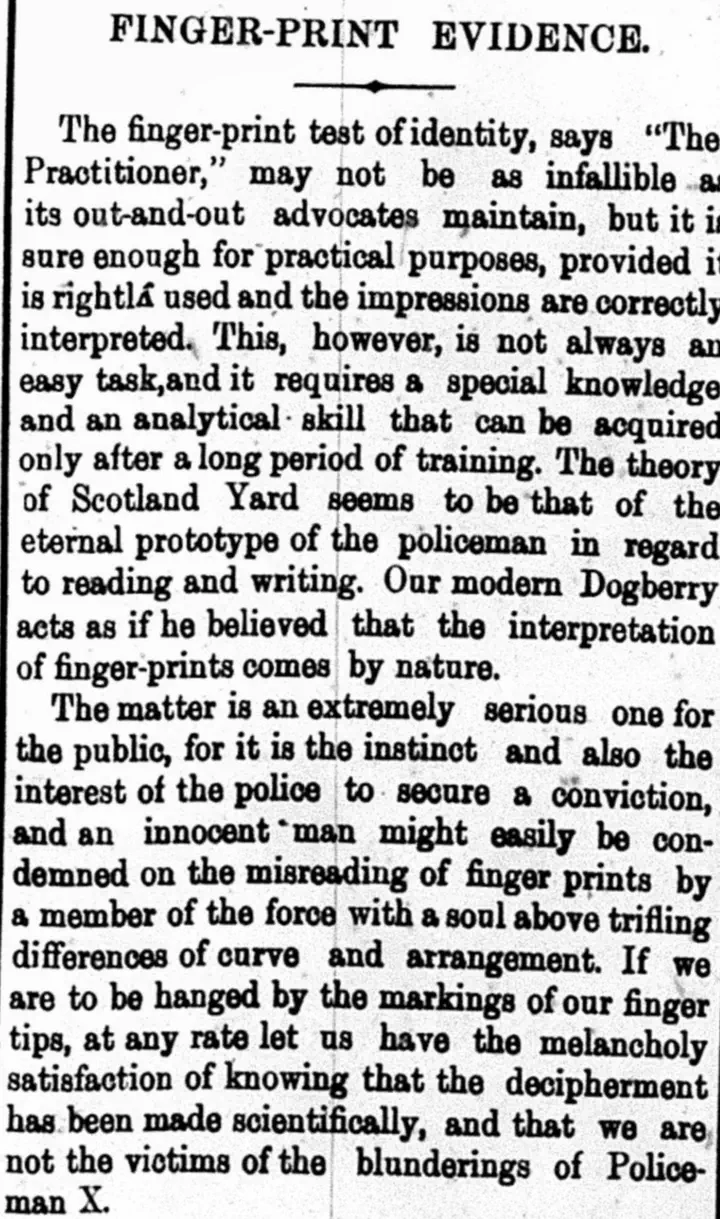The Beginning of Fingerprint Evidence
 Egyptian Gazette article showing the flaws of the new imperfect fingerprinting technology.
Egyptian Gazette article showing the flaws of the new imperfect fingerprinting technology.Fingerprinting technology was first developed as a method of crime solving for police in 1901 in India. England was the first country to make this system of classifying and using fingerprints official in its police forces. With Alexandria being occupied by England in the early 1900’s, this new technology quickly spread to Egypt.
However, fingerprinting was not the foolproof method of crime fighting we know it to be today. In 1905, people in Alexandria were excited about this new technology, but could not trust it fully. The underdeveloped technique often provided incorrect results which caused people to be fearful of wrongful convictions.
Even today, there are problems with faulty fingerprint evidence resulting in wrongful convictions and the technology has been improved upon for over one hundred years. There is also a theory that part of the reason fingerprinting became so popular in England and British occupied countries was that it helped the British keep track of those under their control without any cultural barriers.
Fingerprinting is a universal way to identify people that does not require those people to speak the same language and therefore is less likely to be deceptive. This article from the Egyptian Gazette warns the public of the mistakes that can be made when the police are not trained well enough to interpret fingerprint evidence; however, it still supports the use of the technology when done correctly. The view of this article seems to support the British view on the emerging technology of fingerprint evidence.